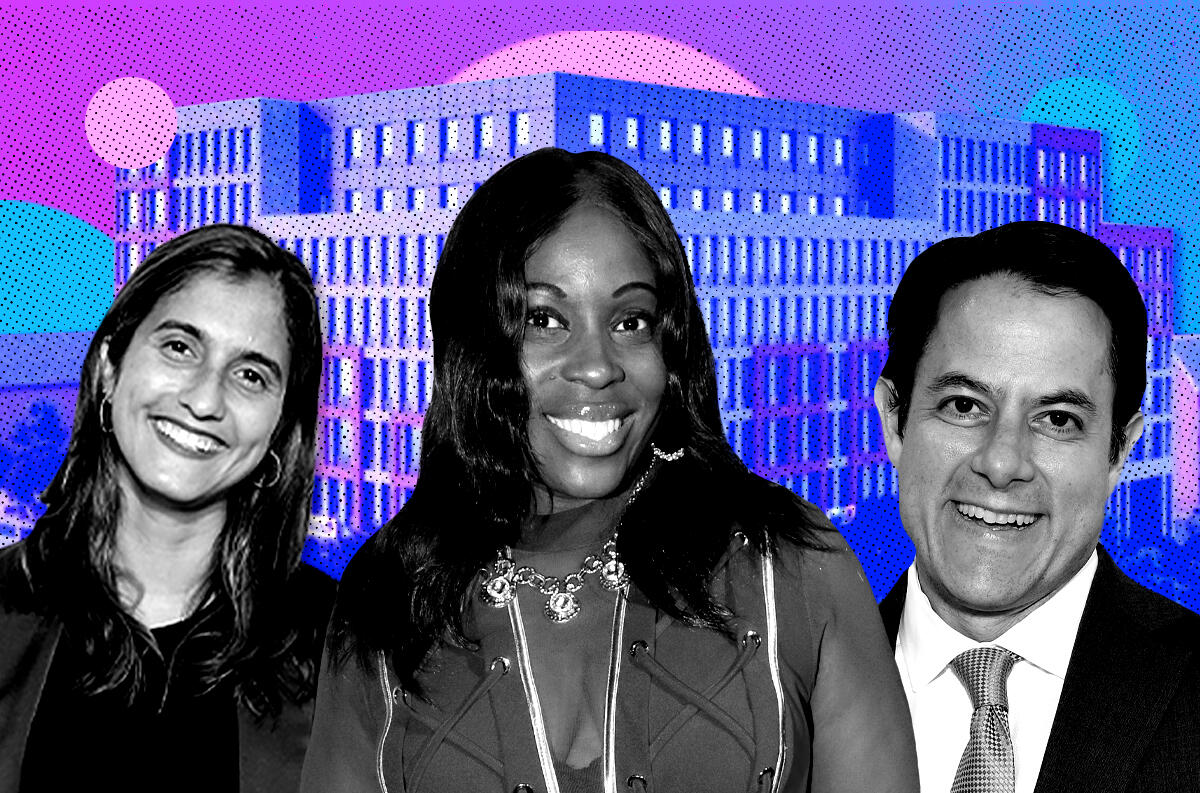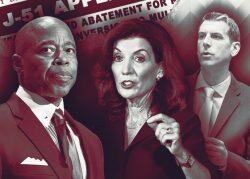 City Planning head talks 421a, easing into rezonings
City Planning head talks 421a, easing into rezonings
Trending
Bronx BP defies Nimbys on controversial Throggs Neck project
Vanessa Gibson indicates willingness to work with developers, but seeks size reduction

In one of her first major land use decisions as Bronx borough president, Vanessa Gibson has recommended approval of a controversial Throggs Neck rezoning. While her decision is only advisory, it paves the way for hundreds of new homes and indicates her willingness to work with developers.
Gibson’s backing gives crucial political cover to the local City Council member to support the rezoning, which would allow for four projects by several local property owners and has been protested by some neighborhood residents.
“While this is one project for the Throggs Neck and Schuylerville community, it will have an impact for the entire borough of the Bronx,” Gibson told the City Planning Commission at a meeting Wednesday.
Sections of the borough have become increasingly popular with developers, and the borough president can be an ally or an obstacle as their applications move through the public review process.
The Throggs Neck project would replace an empty batting cage and 12 vacant parcels with four buildings with 349 apartments, 94 of them affordable, including some for senior citizens and veterans. It would also revamp a Super Foodtown supermarket owned by one of the applicants and create 40,000 square feet of additional commercial space.
Gibson’s support comes with a few conditions, one of which shows she is not about to join a Yimby group: She wants the largest proposed building reduced from eight stories to five to match the public school across the street. Local opponents have decried the project as too large for their low-scale area.
She also requested that the mayor form a task force to fix local infrastructure so that sewer systems and traffic will not be overwhelmed by new residents, even though the environmental impact statement for the project found it would have no significant impact on transportation or water and sewer infrastructure.
“We’re pleased that the borough president has recognized the merits of our project,” said Peter Bivona, a member of the development group and part owner of the Super Foodtown supermarket it plans to redevelop. “The borough president’s recommendations send a strong message that exclusionary zoning has no place in New York City.”
The reference was to zoning that limits development such that housing becomes unaffordable to people of modest means.
While the developers have won the borough president’s blessing, the most important elected official — local City Council member Marjorie Velázquez — is not yet on board.
“I do not support the Bruckner Boulevard rezoning proposal,” Velázquez told The Real Deal. “Due to the current lack of existing infrastructure, including acceptable school space, parking, public transportation, and other needs, I cannot support any project that doesn’t include remedies for those issues.”
The usual rezoning scenario is for the local member to negotiate for size reductions and reach a deal with the applicant at the 11th hour. The Throggs Neck rezoning is supported by Open New York, a pro-housing advocacy group that endorsed Velázquez’s City Council candidacy.
The proposal has drawn fierce opposition since it was announced over a year ago. Throggs Neck is one of the city’s least dense neighborhoods, and its entire community district has produced just 58 units of affordable housing since 2014.
Read more
 City Planning head talks 421a, easing into rezonings
City Planning head talks 421a, easing into rezonings
 Say goodbye to another property tax break
Say goodbye to another property tax break
In 2004, the Bloomberg administration downzoned the neighborhood, one of 70 so-called contextual rezonings that the deputy mayor who presided over them, Dan Doctoroff, later said should be reconsidered to allow for growth. At the commission meeting, Assemblyman Michael Benedetto argued that the designation showed the proposed development is out of step with residents’ desires.
“They voted for the downzoning 18 years ago, and they want to maintain it now,” said Benedetto, who at the time was being challenged by a left-wing candidate in the Democratic primary. “They are very much afraid, and I agree with them — I’ve lived in this area all my life — that this upzoning would definitely change the feel of Throggs Neck. The chemical reaction, so to speak.”
The borough president pushed back against the idea that income-restricted housing would threaten Throggs Neck.
“Affordable housing does not mean more crime. It means stability for families, for children, for elders, to make sure that they have stable housing that every New Yorker truly deserves,” Gibson said.
Another notable project supporter at the commission’s meeting was its chairman, Dan Garodnick, who is pushing for more housing on behalf of the Adams administration. This month he called the defeat of a 50-percent affordable, 917-unit Harlem development a “missed opportunity” — an apparent reference to the City Council’s opposition, although the same could be said for the mayor’s failure to intervene.
On the Throggs Neck plan, Garodnick debunked a series of assertions about its impact on the neighborhood, including that its eight-story centerpiece might interfere with planes taking off and landing at LaGuardia Airport four miles away.
The Bruckner Sites Rezoning hearing took place before the @NYCPlanning Commission, and Chair @DanGarodnick was on point with the fact checking. The ‘FAA flight path’ talking point we heard so much at the Bronx Community Board 10 hearing was authoritatively debunked. pic.twitter.com/T3q9oHFrJn
— Michael Kaess (@WaluigiSoap) June 30, 2022
It’s all moot without Velázquez’s support. Her decision will almost certainly be parroted by the rest of the Council under its tradition of member deference, although most members take a dim view of objections to affordable housing. She will have 50 days from the Planning Commission’s vote to make up her mind.




